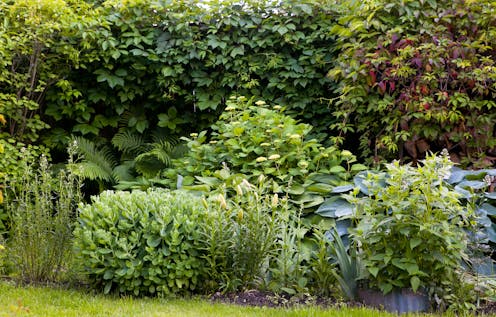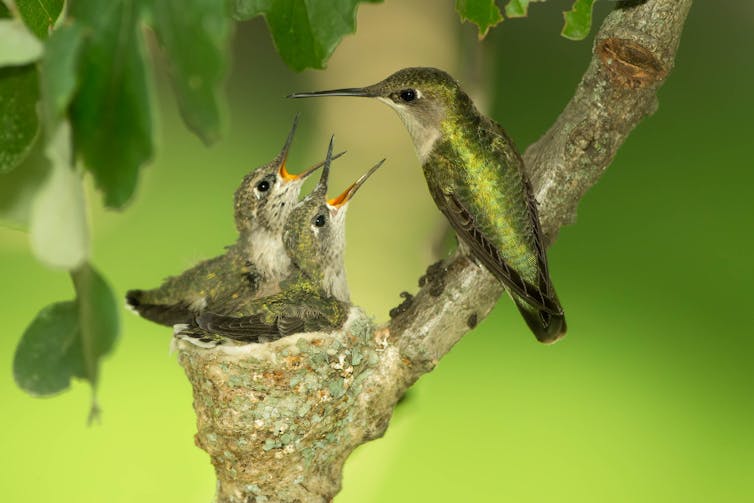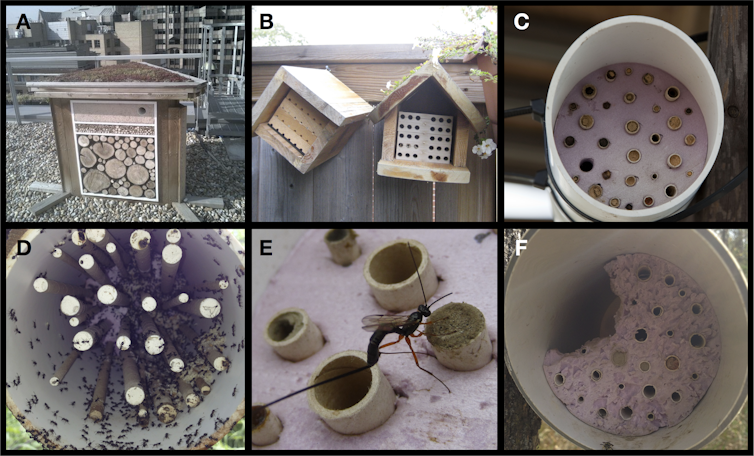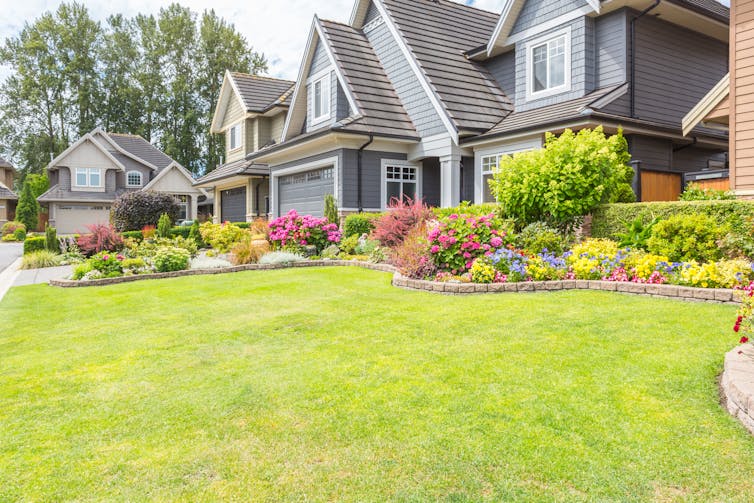
In recent years, declining wildlife populations have motivated people to find ways to protect and conserve the biodiversity in their neighbourhoods. And one such initiative that has gained prominence is wildlife-friendly gardening. These urban gardens create a variety of habitats and conserve biodiversity.
Gardens on private property can make up considerable portions of the greenspace in urban landscapes. And so, when individual gardeners decide to plant certain tree species or retain mature trees, these spaces can help meet wildlife needs in human-dominated areas.
But instead of focusing their limited time, energy and finances in these interventions that deliver effective results, many individual gardeners are falling prey to greenwashing. Greenwashing describes a practice whereby a product’s environmental benefits are exaggerated or misrepresented.
In my work as an ecologist, I have seen people spending money on products that have relatively smaller environmental benefits compared to alternative (and less costly) interventions.
Hummingbirds don’t use birdhouses
Hummingbird houses (also called hummingbird nest boxes or baskets) are small structures that are built from wood or straw. These products have been popping up in gardening catalogues and in the offerings of online vendors. The concept is simple: hang the structures outdoors, wait patiently, and soon the nest boxes will be occupied by nest-building hummingbirds.
In much of North America, this intervention is targeted toward the ruby-throated hummingbird — a common garden visitor with the largest geographical distribution of all hummingbirds. During its breeding season, its range extends beyond a million square kilometres.
When I was first asked about the usefulness of hummingbird houses, I delved into the literature and found no evidence to suggest that hummingbirds actually use the hummingbird houses. Many organizations working to conserve hummingbirds and other bird species have been trying to address this misinformation and redirect gardeners.

Hummingbird nests tend to be very hard to locate, typically occurring high in the canopy of deciduous trees. While hummingbird houses are unlikely to have any negative impact, they are unlikely to provide much value to hummingbirds and can be a waste of time, energy and money.
Gardeners must, instead, maintain tree and shrub cover (so hummingbirds have a place to build their nests), and choose plants that produce lots of nectar. If you want to provide a nesting structure for birds, build or purchase a larger nest box that will be used by other cavity nesting birds like the eastern bluebird, tree swallows or chickadees.
Bee hotels are often occupied by wasps
Of the 3,600 species of bee found in Canada and the United States, 30 per cent are classified as cavity-nesters. These bees create stores of pollen in protected cavities like the hollow ends of twigs or stems that are made by wood-boring insects.
In recent years, bee hotels have become widely available to provide cavity-nesting bees safe places to nest. Bee hotels are constructed from a variety of materials including hollow tubes or pithy stems, where a solitary bee can create her nest.
The idea behind this was that providing solitary bees with a selection of nesting sites would increase the populations of solitary bees (especially native species).
But research paints a more complex picture. A comprehensive study of bee hotels in Toronto found that native bees accounted for less than 25 per cent of the insects using bee hotels. Most of the residents using the “bee hotels” were solitary wasps, which usually form their nests from mud, providing their larvae with insects and spiders to eat.

During the study, the authors found that native bees using the hotels were attacked by parasitoids at a rate about three times higher than introduced bee species. A parasitoid is an insect that feeds on tissues of an insect host (in this case, a bee) leading to the eventual death of the host.
The authors of the study found that at their worst, bee hotels might be serving as a way of concentrating bees into high density aggregations where they may be more vulnerable to predation, parasites or pathogens.
Most home gardeners find it difficult to determine whether the bee hotel is working as intended or to determine whether the bees within them are native or non-native. Understanding this before setting up such bee hotels is crucial because the rapid increase in non-native mason bee numbers has been linked to the decline of native mason bees, most likely through the transmission of diseases.
Choosing plants that offer lots of nectar and pollen, maintaining patches of bare soil in a sunny part of the garden (most bees live in the soil) and retaining or bringing in deadwood and old stems are all useful alternatives to bee hotels.
Nature is messy
Ecological systems are full of variation. The more diversity in the plant and animal species in it, the more healthy and resilient it is. A tidy and well-manicured garden may not fully support the needs of the native insects and birds.

My advice to anyone looking to make their gardens more wildlife-friendly, is to consider pushing back against obsessive tidiness syndrome. Coined by ecologist Douglas Boyes, the term “obsessive tidiness syndrome” describes humanity’s fixation on keeping things looking “just so” at the expense of leaving space for wildlife.
Designating parts of the garden as “low-tidiness” or “wild” areas can provide wildlife habitats.
Greenwashing appears in many facets of our lives. Fortunately, in the case of wildlife-friendly gardening, the answers are often shared and simple to implement: pick plants that feed wildlife (especially native plants), tolerate a little messiness and learn more about the specific needs of the wildlife you wish to shelter and conserve.
Putting these practices into action, and encouraging others to do the same, can help ensure our coexistence with the biodiversity around us.
Paul Manning receives funding from the Natural Sciences and Engineering Research Council of Canada.
This article was originally published on The Conversation. Read the original article.







